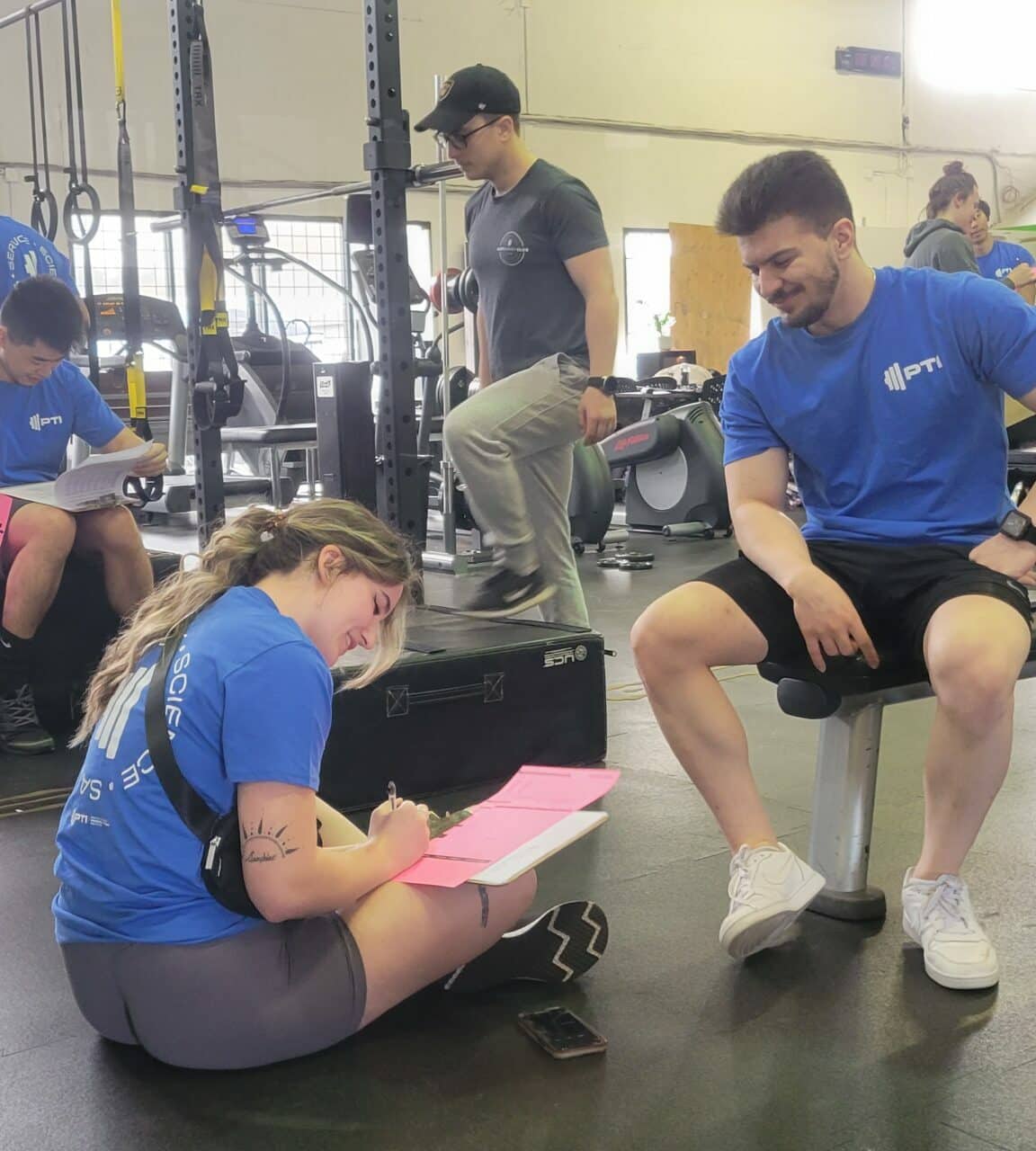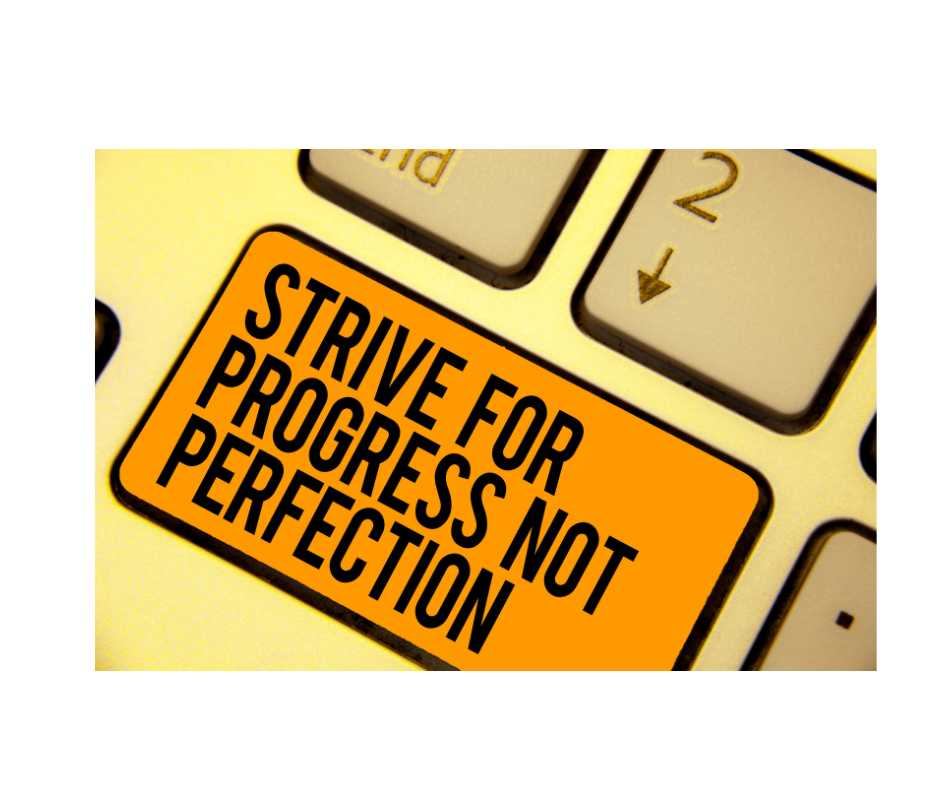The statistics on how many people actually follow through and accomplish their New Year’s resolutions are rather grim. Studies have shown that less than 25% of people actually stay committed to their resolutions after just 30 days, and only 8% actually accomplish them.
And we’ve all seen this before:
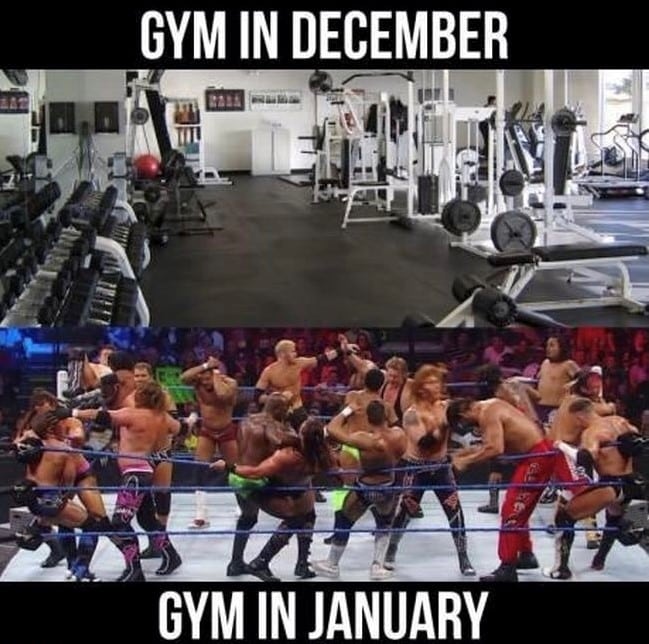
Well… or maybe this:
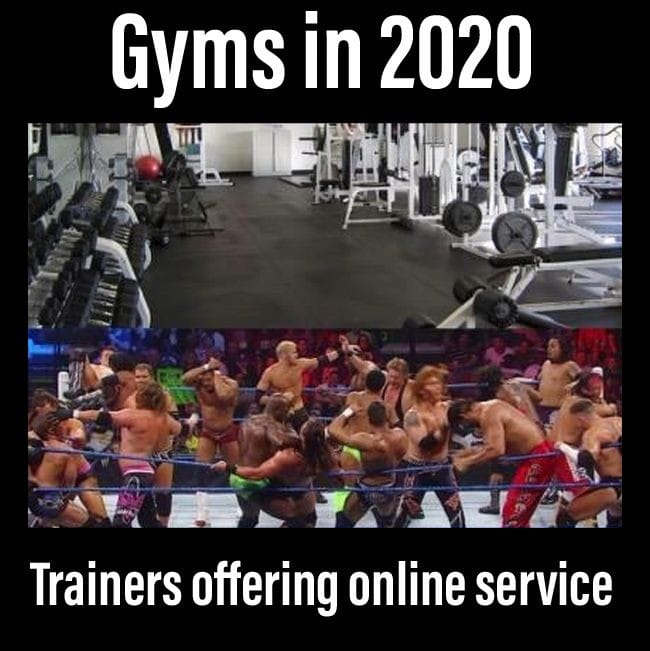
But this is not a bummer blog. Instead, I want to ground on something really important – EVERYONE:
- who talks to a trainer
- joins a gym
- seeks out info on the internet
- wants to lose weight
- wants to gain muscle
- wants to run faster
- wants to fit into their clothes better
ALL OF THEM (should) want to be healthy (or healthier.) And I really believe that 2020 was an opportunity for us, collectively, to remember the importance of health.
So whether you are staying away from gyms for now or have been working out all along. You are thinking about becoming a personal trainer or you are looking to use January to lift your business – here are 3 things we should build on to help clients of any level start to make changes, promote their health and, if it suits, complement their exercise or training.
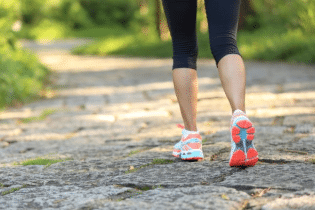
WALK 10 MINUTES A DAY
Only half of adults get enough aerobic activity to improve their health. If we want to look at simple things to start, walking is available to just about everyone. You don’t need a gym. You don’t need to be educated on the technique or form. You can do it anywhere, anytime. And small distances accumulate to a beneficial total. As a trainer, even simple coaching like taking a current 3,000 steps of exercise and increasing it to 5,000 is a great coaching tip. (Getting to and maintaining 10,000 steps a day would be the longer term goal!)
Way to Get Walking:
- get up 10 minutes earlier and walk around your block/neighbourhood/building
- park further away or get off 1 stop early and walk the extra distance to work
- before you eat lunch go for a 10 minute walk (great time to bang out a quick meeting and you enlist a buddy in your efforts to get healthier!)
- get the family involved and go for a walk after dinner. This can help improve digestion, create some quality time away from screens and become part of a sleep routine over time
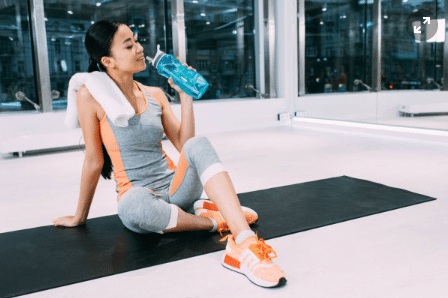
DRINK (ENOUGH) WATER
Drinking enough water each day is crucial for many reasons: to regulate body temperature, keep joints lubricated, prevent infections, deliver nutrients to cells, and keep organs functioning properly. Being well-hydrated also improves sleep quality, cognition, and mood.
How many cups of water do you drink a day?
In a quick search, the data shows that 75% of Americans are chronically dehydrated. Although the survey found that Americans drank about eight servings of hydrating beverages per day, this is offset by drinking caffeinated beverages and alcohol and eating a diet high in sodium.
Thirst is the first indication of dehydration but other signs & symptoms include:
- headaches
- being unable to focus or concentrate
- passing darker urine than usual
- fatigue
- muscle weakness and cramps
- constipation
- dry, flaky skin
- altered kidney, heart, or digestive function
The average human needs 12 cups of water a day to be properly hydrated (and an additional cup of water per hour of exercise) but it can be daunting to drink that much water all at once. It’s also pretty distracting/frustrating to have to go to the bathroom every half hour! A good coach will help identify ways to simply and slowly increase water intake (and reduce caffeine, sugary drinks, alcohol, etc) so that the habit will stick!
Ways to Get Hydrated:
- put a glass of water beside your bed so you can drink during the night if you wake up thirsty or you can drink 1 glass when you first wake up
- have a glass of water with each meal (even better if you replace sugary drinks or alcohol!)
- have a water bottle with you all the time – studies show that simply having a water bottle on the desk while you are working increases water consumption because if it’s easy and available you’ll reach for it
- always take a water bottle to the gym so you get 2-3 cups in while you exercise/sweat
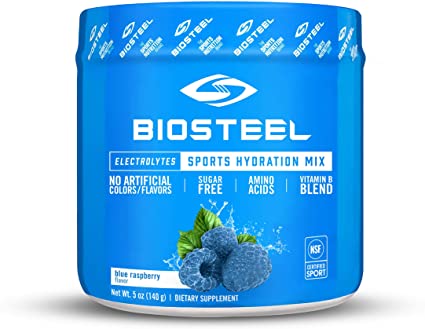
BONUS: make it taste good! There are easy and calorie-wise ways to make your water delicious!
- add a scoop of a natural electrolyte powder like Biosteel (blue raspberry is my fave!) Look for sugar-free, no artificial sweeteners or colours
- a couple slices of cucumber and a fresh mint leaf
- a slice of orange or pineapple
- squeeze a quarter of a lemon or lime into your water
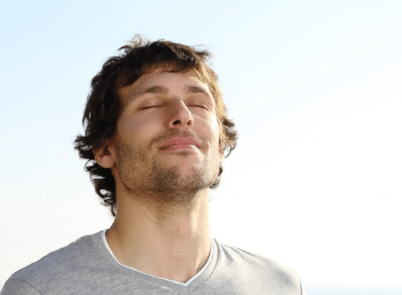
BREATHE
Breathing is a powerful mechanism in the body and we do it, on average, 12 to 16 times per minute (normal respiration rate for a healthy adult.) This may seem overly simple because you’ve been breathing since the moment you were born, but there is something important to consider about taking 3-5 minutes of your day to bring intention to your breathing.
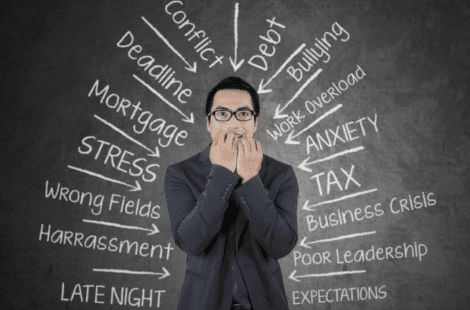
Sympathetic Response – the “fight or flight” response of the body that acts in response to threat, stress, pain, fear, etc. It’s designed to give your body the nutrients, energy & oxygen needed to run, fight and survive. While important, we were never designed to stay in the state for long periods of time and yet, especially over the last year, we are dealing with so much stress and uncertainty that lots of people are “tuned up” and stressed out all the time. This has detrimental effects on the body long term:
- muscle & bone loss
- fat gain or redistribution
- insulin resistance
- suppressed immune function
- adrenal fatigue
- exacerbates other health conditions like heart disease, diabetes, mental health (depression, anxiety, etc.)

Parasympathetic Response – the “rest and digest” response is pretty much exactly what it describes. All of the functions that dial up energy and output in the sympathetic state are reversed – heart rate decreases, breathing rate decreases, blood flow supports digestion, energy is conserved. This is where we come back to the importance of breathing.
Breathing slowly and deeply stimulates the vagus nerve which, in turn, stimulates the parasympathetic response in the body. You can literally change your state and stress by taking a few deep calming breaths. So where we have no control over the stress and chaos around us, we can take action on our RESPONSE to stress by slowing down breathing and initiating a calming response in the body.
Ways to Incorporate Breathing into you day:
- before you get out of bed in the morning, take 2 minutes to breath slowly and deeply, setting a calm intention for the start of your day (much better than grabbing your phone and checking your email or scrolling though social media to wake up! This can be a great way to incorporate a meditation practice into your lifestyle too!)
- before you eat a meal, take 1 minute to close your eyes, sit up and breath slowly.
- If you notice that your body feels tight or you are feeling stressed, just take 1-2 minutes to breathe. This is actually a really important awareness that can lead to simple real-time stress management!
- after your workout like on your back for 3-5 minutes and breath. This is a great way to dial down from the stress of your workout and have a calmer, more productive afternoon/evening. The picture below shows a great set up for parasympathetic breathing – supporting your back and unloading the weight of your legs promotes diaphragmatic breathing and relaxation.
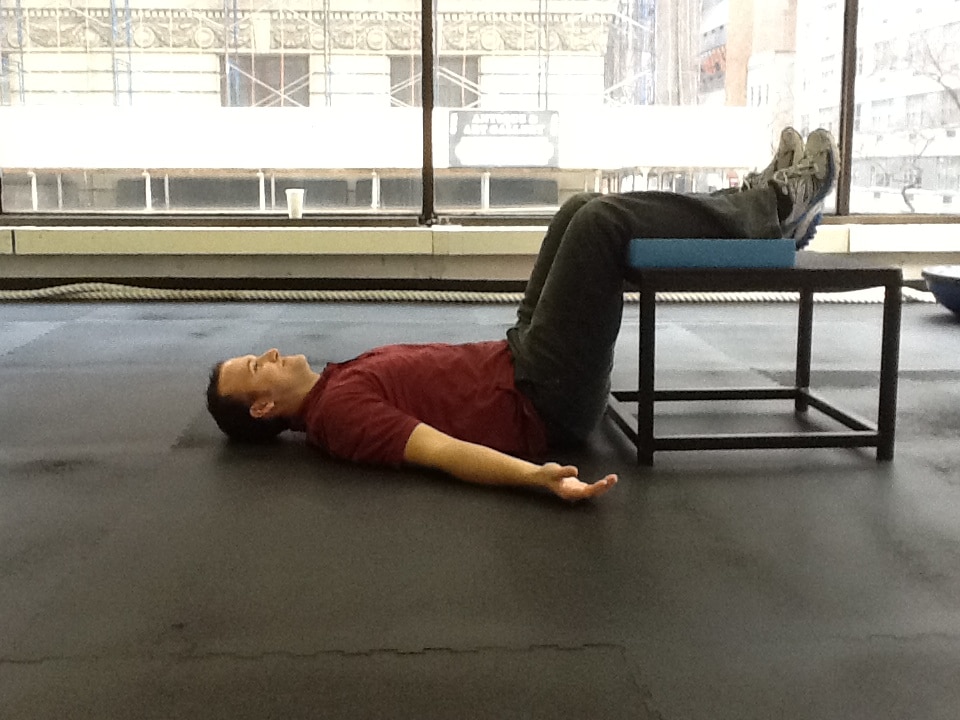
I’ll admit – I love my daily workout/physical activity and I love to train clients and run group sessions. But I also know that there are decades of successful habits behind my lifestyle. While we may want to inspire clients to make these changes to reach their own goals, we have to remember to MEET OUR CLIENTS WHERE THEY ARE STARTING FROM. And 2020 was a hell of a year. Don’t underestimate the power (and empowerment) of simple, effective, healthy habits to make real, lasting change. Consider that if your clients are dehydrated, exhausted, stressed, overweight, fearful of Covid, eating unhealthy food and dealing with health issues, then “working them out” is likely to make them feel sore, more tired and defeated. What can you do to make them FEEL BETTER first?!
Walk 10 minutes a day.
Drink water.
Breathe.
We can all do those things. (We, as fitness professionals, should be doing these things!) That’s it – I’m going for a walk 🙂
Tags:
Related Posts
We’re here to help you!
Questions, comments or want to register? Fill out the form below and we will contact you shortly. Thanks!
"*" indicates required fields

